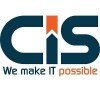Filter interviews by
Sourcefuse Technologies Interview Questions and Answers
27 Interview questions
I approach incident tickets methodically, prioritizing, diagnosing, and resolving issues efficiently while ensuring communication.
Prioritize tickets based on severity and impact on business operations.
Gather relevant information from the ticket and any related documentation.
Diagnose the issue by replicating it in a test environment, if possible.
Implement a solution and document the steps taken for future reference...
I utilize various Azure monitoring tools to ensure optimal performance, security, and reliability of cloud resources.
Azure Monitor: Provides comprehensive monitoring of applications and infrastructure.
Azure Log Analytics: Helps analyze log data for insights and troubleshooting.
Azure Application Insights: Monitors application performance and user behavior.
Azure Network Watcher: Monitors and diagnoses network issues...
The AI/ML project life cycle involves stages from problem definition to deployment and monitoring for continuous improvement.
Problem Definition: Clearly define the problem you want to solve, such as predicting customer churn in a subscription service.
Data Collection: Gather relevant data from various sources, like user behavior logs or sales records, to train your model.
Data Preprocessing: Clean and preprocess the...
Transformers are a type of neural network architecture designed for natural language processing, utilizing self-attention mechanisms.
Self-Attention Mechanism: Allows the model to weigh the importance of different words in a sentence, enabling better context understanding.
Multi-Head Attention: This technique allows the model to focus on different parts of the input simultaneously, improving its ability to capture r...
Developed a scalable e-commerce platform using microservices architecture to enhance user experience and streamline operations.
Utilized microservices architecture to improve scalability and maintainability.
Implemented RESTful APIs for seamless communication between services.
Integrated payment gateways like Stripe and PayPal for secure transactions.
Employed Docker for containerization, ensuring consistent environme...
As a PM, I use various tools such as project management software, communication tools, and collaboration platforms.
Project management software (e.g. Microsoft Project, Asana)
Communication tools (e.g. Slack, Microsoft Teams)
Collaboration platforms (e.g. Google Drive, Trello)
I manage resources by assessing project needs, assigning tasks based on skill sets, and tracking hours to ensure efficient use of time.
Assess project requirements and determine resource needs
Assign tasks to team members based on their skill sets and availability
Track hours worked by each team member to ensure project stays on schedule
Adjust resource allocation as needed to address any bottlenecks or delays
Project use cases refer to specific scenarios or situations where a project management approach is applied to achieve specific goals.
Project use cases involve defining project scope, objectives, deliverables, timelines, and resources.
Examples include software development projects, construction projects, event planning projects, and marketing campaigns.
Project use cases help ensure that projects are completed effic...
The project lifecycle consists of initiation, planning, execution, monitoring and controlling, and closing phases.
Initiation: Define the project, set goals, and obtain approval.
Planning: Develop a roadmap, allocate resources, and create a schedule.
Execution: Implement the plan, manage resources, and communicate progress.
Monitoring and Controlling: Track performance, make adjustments, and address issues.
Closing: Fi...
I contribute to profit margin by optimizing project timelines, reducing costs, and maximizing resources.
Optimizing project timelines to ensure efficient use of resources
Reducing costs through effective budget management and negotiation with vendors
Maximizing resources by assigning tasks effectively and utilizing team members' strengths
Implementing cost-saving measures such as automation or process improvements
Iden...
Sourcefuse Technologies Interview Experiences
19 interviews found
I applied via Naukri.com and was interviewed in Dec 2024. There were 2 interview rounds.
A coding test related to JavaScript.
(2 Questions)
- Q1. Js and angular questions like routing
- Q2. Promise, pipes, life cycle hooks
Interview Preparation Tips
I applied via Naukri.com and was interviewed in Jul 2024. There were 2 interview rounds.
(4 Questions)
- Q1. How do you contribute to Profit Margin?
- Ans.
I contribute to profit margin by optimizing project timelines, reducing costs, and maximizing resources.
Optimizing project timelines to ensure efficient use of resources
Reducing costs through effective budget management and negotiation with vendors
Maximizing resources by assigning tasks effectively and utilizing team members' strengths
Implementing cost-saving measures such as automation or process improvements
Identifyi...
- Q2. How do you manage resources and allocate hours?
- Ans.
I manage resources by assessing project needs, assigning tasks based on skill sets, and tracking hours to ensure efficient use of time.
Assess project requirements and determine resource needs
Assign tasks to team members based on their skill sets and availability
Track hours worked by each team member to ensure project stays on schedule
Adjust resource allocation as needed to address any bottlenecks or delays
- Q3. How do you track project progress?
- Ans.
I track project progress using project management software, regular status meetings, progress reports, and milestone tracking.
Utilize project management software to track tasks, timelines, and milestones
Hold regular status meetings with team members to discuss progress and address any issues
Generate progress reports to provide stakeholders with updates on project status
Track milestones to ensure project is on schedule ...
- Q4. Do you know Project use cases?
- Ans.
Project use cases refer to specific scenarios or situations where a project management approach is applied to achieve specific goals.
Project use cases involve defining project scope, objectives, deliverables, timelines, and resources.
Examples include software development projects, construction projects, event planning projects, and marketing campaigns.
Project use cases help ensure that projects are completed efficientl...
(4 Questions)
- Q1. What kinds of projects have you managed?
- Ans.
I have managed a variety of projects including software development, construction, event planning, and marketing campaigns.
Software development projects
Construction projects
Event planning projects
Marketing campaign projects
- Q2. How do to track project progress?
- Ans.
Project progress can be tracked through regular status updates, milestone tracking, and using project management tools.
Regular status updates from team members to track tasks completed and any roadblocks
Tracking milestones to ensure project is on schedule
Utilizing project management tools like Gantt charts or Kanban boards to visualize progress
Conducting regular meetings to discuss progress and address any issues
Using ...
- Q3. What is the lifecycle of a project?
- Ans.
The project lifecycle consists of initiation, planning, execution, monitoring and controlling, and closing phases.
Initiation: Define the project, set goals, and obtain approval.
Planning: Develop a roadmap, allocate resources, and create a schedule.
Execution: Implement the plan, manage resources, and communicate progress.
Monitoring and Controlling: Track performance, make adjustments, and address issues.
Closing: Finaliz...
- Q4. What tools do you use as a PM?
- Ans.
As a PM, I use various tools such as project management software, communication tools, and collaboration platforms.
Project management software (e.g. Microsoft Project, Asana)
Communication tools (e.g. Slack, Microsoft Teams)
Collaboration platforms (e.g. Google Drive, Trello)
Interview Preparation Tips
Aptitude,reasoning and core subjects of computer science and 3 coding questions
(1 Question)
- Q1. Java ,Dbms and springboot
I appeared for an interview in May 2025, where I was asked the following questions.
- Q1. What is your approach to solving incident tickets?
- Ans.
I approach incident tickets methodically, prioritizing, diagnosing, and resolving issues efficiently while ensuring communication.
Prioritize tickets based on severity and impact on business operations.
Gather relevant information from the ticket and any related documentation.
Diagnose the issue by replicating it in a test environment, if possible.
Implement a solution and document the steps taken for future reference.
Comm...
- Q2. What monitoring tools do you utilize?
- Ans.
I utilize various Azure monitoring tools to ensure optimal performance, security, and reliability of cloud resources.
Azure Monitor: Provides comprehensive monitoring of applications and infrastructure.
Azure Log Analytics: Helps analyze log data for insights and troubleshooting.
Azure Application Insights: Monitors application performance and user behavior.
Azure Network Watcher: Monitors and diagnoses network issues.
Azur...
I applied via Company Website and was interviewed in Apr 2024. There were 3 interview rounds.
Test have 5 sections Aptitude, Reasoning, Pseudo Code, Coding
They miss communication (English reasoning) after first test, they again mail about communication test mail.
Which is easy to search on google and find on chatGPT.
(1 Question)
- Q1. After 1 week got mail about Technical Round HR told me in this hiring we have 2 round of Technical Round. In Technical Interview: Formal Introduction About Internship (In my case) Tech stack used (in Proj...
(1 Question)
- Q1. Explain with SQL tables how join work and What are inner join and Left join, Right join?
- Ans.
SQL joins combine rows from two or more tables based on a related column between them.
Inner join returns rows when there is a match in both tables based on the join condition.
Left join returns all rows from the left table and the matched rows from the right table.
Right join returns all rows from the right table and the matched rows from the left table.
Skills evaluated in this interview
(2 Questions)
- Q1. Explain project
- Ans.
Developed a scalable e-commerce platform using microservices architecture to enhance user experience and streamline operations.
Utilized microservices architecture to improve scalability and maintainability.
Implemented RESTful APIs for seamless communication between services.
Integrated payment gateways like Stripe and PayPal for secure transactions.
Employed Docker for containerization, ensuring consistent environments a...
- Q2. Hackerrank test
Interview Preparation Tips
I applied via Approached by Company and was interviewed in Sep 2023. There were 4 interview rounds.

Asked to create a BRD document, WBS, and wireframes for a to-do list mobile app
(1 Question)
- Q1. Questions based on past projects, experience, and agile.
(1 Question)
- Q1. Detailed discussion on past projects, what's your favorite app and how will you improve it
Interview Preparation Tips
I'd recommend exploring other opportunities at better companies.
I applied via Naukri.com and was interviewed in Sep 2023. There were 3 interview rounds.

(2 Questions)
- Q1. What do you understand by lvm?
- Ans.
LVM stands for Logical Volume Manager, a tool used in Linux to manage storage by creating logical volumes from physical volumes.
LVM allows for dynamic resizing of logical volumes without downtime.
It provides features like snapshots, striping, mirroring, and thin provisioning.
Example: Creating a logical volume 'lv_data' from physical volume 'sda2'.
- Q2. Which command is use to see lvm?
- Ans.
The command used to see LVM is 'lvdisplay'.
Use 'lvdisplay' command to see information about logical volumes in LVM.
You can also use 'lvscan' to scan all disks for LVM volumes.
To see a list of all logical volumes, use 'lvs'.
(1 Question)
- Q1. Tell me about your experience and issue you faced?
- Ans.
I have extensive experience in customer support, handling various issues and ensuring customer satisfaction.
Managed a high volume of customer inquiries via phone and email, resolving issues efficiently.
Faced challenges with irate customers; used active listening and empathy to de-escalate situations.
Implemented a new ticketing system that improved response times by 30%.
Trained new team members on best practices for cus...
Skills evaluated in this interview
I appeared for an interview before May 2024, where I was asked the following questions.
- Q1. What is the architecture of Transformers?
- Ans.
Transformers are a type of neural network architecture designed for natural language processing, utilizing self-attention mechanisms.
Self-Attention Mechanism: Allows the model to weigh the importance of different words in a sentence, enabling better context understanding.
Multi-Head Attention: This technique allows the model to focus on different parts of the input simultaneously, improving its ability to capture relati...
- Q2. What is the life cycle of AI/ML projects?
- Ans.
The AI/ML project life cycle involves stages from problem definition to deployment and monitoring for continuous improvement.
Problem Definition: Clearly define the problem you want to solve, such as predicting customer churn in a subscription service.
Data Collection: Gather relevant data from various sources, like user behavior logs or sales records, to train your model.
Data Preprocessing: Clean and preprocess the data...
Interview Preparation Tips
I applied via Approached by Company and was interviewed in May 2022. There was 1 interview round.
(5 Questions)
- Q1. What is the best project you've worked on?
- Ans.
I developed a responsive web application for a local non-profit, enhancing their outreach and donation capabilities significantly.
Implemented a user-friendly interface using React, improving user engagement by 30%.
Integrated a secure payment gateway for donations, ensuring compliance with PCI standards.
Utilized RESTful APIs to connect with external services for real-time data updates.
Conducted user testing sessions, ga...
- Q2. Explain the end-to-end details of the technical workflow of one of your projects.
- Ans.
Developed a web app for a task management system, focusing on user authentication, task creation, and real-time updates.
User Authentication: Implemented OAuth 2.0 for secure login using Google and Facebook.
Frontend Development: Utilized React for building a responsive UI, allowing users to create and manage tasks.
Backend API: Developed RESTful APIs using Node.js and Express to handle task CRUD operations.
Database Integ...
- Q3. Why you choose this technology for the task?
- Ans.
I chose this technology for its scalability, community support, and ease of integration with existing systems.
Scalability: Technologies like React or Node.js can handle increased user loads efficiently.
Community Support: Popular frameworks have extensive documentation and active communities, making troubleshooting easier.
Integration: Technologies such as RESTful APIs allow seamless integration with other services and d...
- Q4. How would you approach slow DB queries?
- Q5. Explain newer features in ECMAScript.
Interview Preparation Tips
- Node.Js
- AWS
- Angularjs
- loopback (optional)
- react (optional)
Top trending discussions






Sourcefuse Technologies Interview FAQs
The duration of Sourcefuse Technologies interview process can vary, but typically it takes about less than 2 weeks to complete.
Tell us how to improve this page.
Sourcefuse Technologies Interviews By Designations
- Sourcefuse Technologies Devops Engineer Interview Questions
- Sourcefuse Technologies Software Engineer Interview Questions
- Sourcefuse Technologies Full Stack Developer Interview Questions
- Sourcefuse Technologies Senior Software Engineer Interview Questions
- Sourcefuse Technologies Project Manager Interview Questions
- Sourcefuse Technologies Customer Support Executive Interview Questions
- Sourcefuse Technologies Business Analyst Interview Questions
- Sourcefuse Technologies Senior Technical Recruiter Interview Questions
- Show more
Interview Questions for Popular Designations
- Associate Interview Questions
- Team Lead Interview Questions
- Software Engineer Interview Questions
- Senior Associate Interview Questions
- Associate Software Engineer Interview Questions
- Graduate Engineer Trainee (Get) Interview Questions
- Accountant Interview Questions
- Senior Software Engineer Interview Questions
- Show more
Overall Interview Experience Rating
based on 14 interview experiences
Difficulty level
Duration
Interview Questions from Similar Companies
Sourcefuse Technologies Reviews and Ratings
based on 124 reviews
Rating in categories
|
Devops Engineer
59
salaries
| ₹10 L/yr - ₹17 L/yr |
|
Software Engineer
51
salaries
| ₹6 L/yr - ₹18.8 L/yr |
|
Senior Software Engineer
41
salaries
| ₹14.6 L/yr - ₹25.7 L/yr |
|
QA Engineer
19
salaries
| ₹5.5 L/yr - ₹14 L/yr |
|
Technical Lead
18
salaries
| ₹19.6 L/yr - ₹34.5 L/yr |

Tekwissen

Damco Solutions

smartData Enterprises

In Time Tec Visionsoft
- Home >
- Interviews >
- Sourcefuse Technologies Interview Questions















